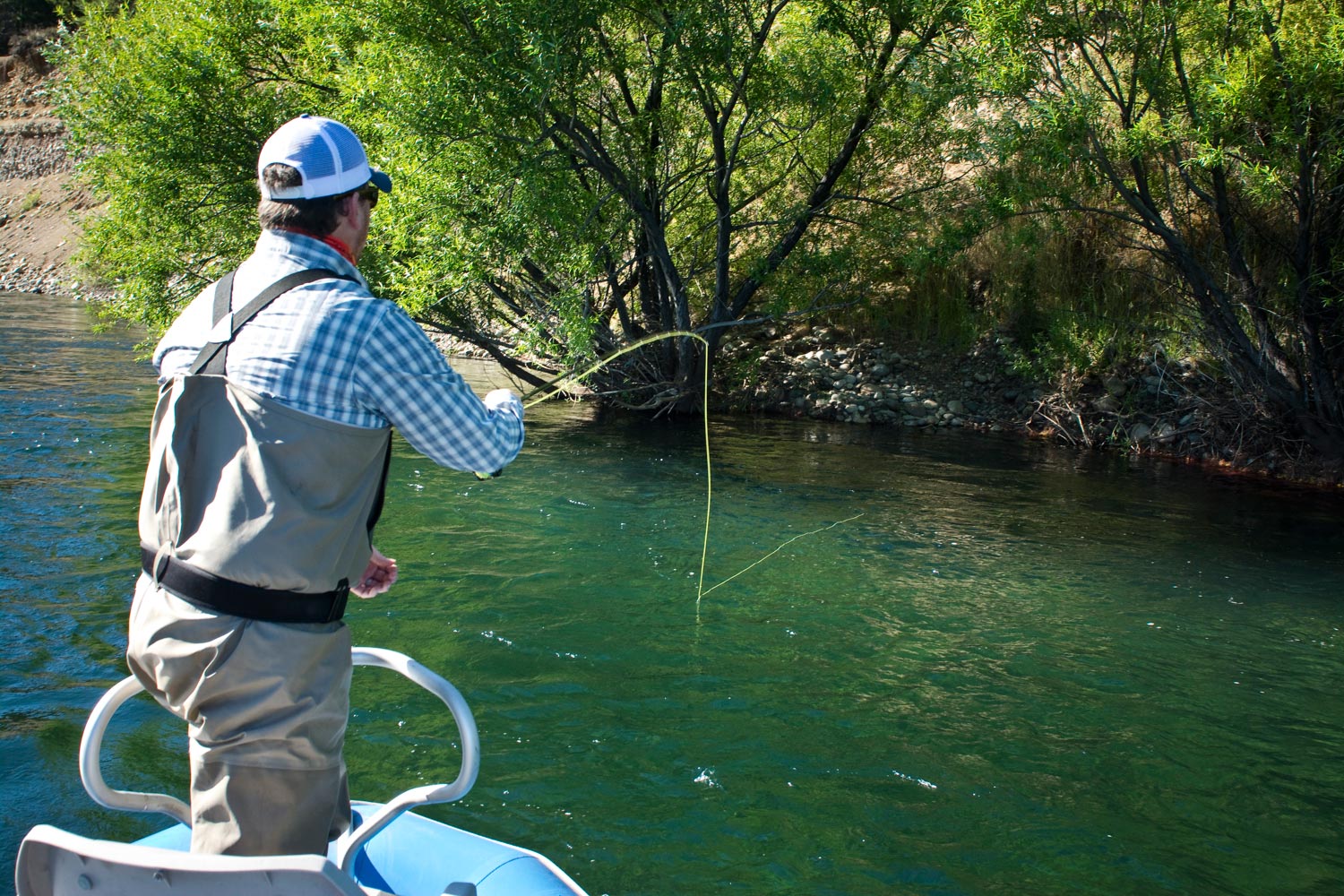By Justin Pickett
“Twitch, twitch, stop!”, exclaims my guide, Eduardo.
I’ve heard these words all week and now it’s just become second nature for me as soon as my dry fly hits the water. I have to admit though, it’s been extremely effective.
We’re taught as newbies to focus on presenting our fly on a drag free, dead drift and that’s great. It’s good to start with the fundamentals. It’s one of many pieces of the puzzle that sets a foundation for us to build from as we progress as fly anglers. Sometimes the situation calls for a little persuasion. A little twitch, jiggle, shake, or twerk is just want we need in order to entice a strike.
Movement helps imitate life. Think about it for a second. How often do you see a caddis, or stonefly, or a hopper sitting perfectly still as it floats along the water’s surface? Sure it happens, but the vast majority of the time they are kicking those legs and their wings are fluttering frantically. It may as well be a dinner bell, screaming “come and get it!”
Adding even just a very subtle amount of movement to your fly can help those trout tap into that primal, predatory instinct and devour your fly. I’ve had trout come back for a second look after twitching the fly when they initially refused it. Just a little wiggle of the rod tip, or jiggling the fly line with your free hand, is typically all you need to impart some movement.
So next time you’re out chucking dry flies, try adding a little “twitch, twitch, stop”.
You might just find yourself hooked up more often!
Justin Pickett Gink & Gasoline www.ginkandgasoline.com hookups@ginkandgasoline.com Sign Up For Our Weekly Newsletter!

Good recommendation; we always need another idea in our ‘kits’ to entice that bite. Thanks
Just a twitch as the fly lands or thruout the drift?
I discovered the same thing last week when fishing near the mouth of a small stream in a local pond. The little rainbows kept hitting my fly just after I accidently moved it. So I started giving it a little 2 to 3 inch twitch every so often. More often than not, I’d get a strike just after the twitch.
Whenever I’m dredging a big stonefly or worm pattern, I’ll give it occastional little twitches through the drift. Seems to work when the water is higher or off color!
This is something I seldom do and I could see where a little jiggle of the line would entice a take on slow days. I will remember this on my next outing. Thanks Bill
I like to twitch and slow strip jerks/twitches of my small wet flies after swinging them the traditional way. Some people tell me that is ‘wrong’, but I can catch fish anyway, so I do it.
Dear Lord. . . . . . ‘Twerk’ in a fly fishing article. . . . . Probably written by the same hedonistic animal that published the article on Bluegill Fishing! What has this sacred sport come to? . . . . .
This article brings to mind a number of things. First this is where some entomology comes to mind, and I’m just addressing dry flies in this response. As far as aquatic inverts are concerned, mays vs caddis vs stones, vs midges. I’d be more likely to lump midges and mays together, as far as how they are fished, and then have the other two as stand alones. A lot of mays and midges do drift. A number of mays do have some movement or can draw a strike with movement. Caddis pretty much all move on the surface at least a little and stones move a ton. terrestrials are a whole other thing. I typically drag free drift ant or caterpillar dries and put little to a lot of motion on hopper and cricket patterns. Many of these discoveries come by accident. Sometimes a twitch or a stall gives just enough motion to the fly to elicit a strike by simply turning it a fraction of an inch. I have memories of fishing dries with rubber legs on a big dry on slough cr. By stalling the fly just enough to straighten the rubber legs I was getting eats. On another day nearby drowning caddis and then fishing almost tight lined as emergers was the ticket. Some days with some hatches a true dead drift is the ticket. I think this is where creativity matters and where the science meets the art.
This is especially true if fishing water that is primarily inhabited by caddis. I found that letting the fly swing out and drag at end of the presentation would induse pretty consistant strikes when fishing in the late evening.